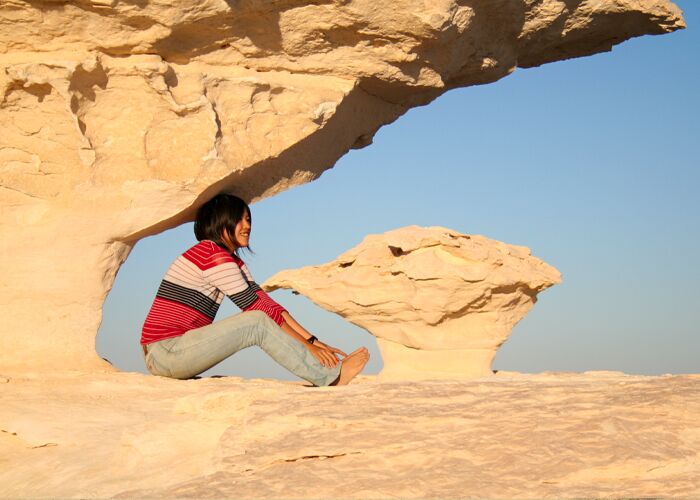The Farafra Oasis in Egypt is a well-liked tourist attraction because of its natural beauty.
Nearby Farafra is a famous tourist attraction since it is the nearest oasis to the White Desert. This desert is usually visited from Bahariya, omitting the chance to see Farafra.
The absence of Farafra, with its singular appeal, is especially disappointing.
The new valleys habitation project has led to a rise in the number of Farafronies in recent years.
New farms needed water, so wells were drilled, and the population grew from a few thousand in the 1980s to over 15,000 today.
These people now live in the several hamlets that have sprouted up around the main town of Qasr Farafra, which is home to around 5k people..
Businesses have sprung up along the roadway as a result, making it easier to replenish while driving across the desert.
With its tiny alleyways and low, tin-roofed homes, Farafra is hard to envisage as a Roman or Ottoman city. Initially, it seems as though the town’s ancient mud-walled stronghold, which was built in the Roman era but has been entirely washed away by heavy rains since the 1950s, has fallen into ruin.
In contrast to the abandoned mud fortresses in Dakhla Oasis, the Farafra fortress is still inhabited despite its poor state of preservation, lending an air of continuity to the ancient history of the oasis.
Farafra’s handiwork.
Except for the spinning of camel and sheep wool, Farafra has no famous artisan tradition like Siwa, which is well-known for its jewelry, or Dakhla and Kharga, which are well-known for their ceramics. In Egypt and the rest of the world, spinning is seen as a manly pursuit.
A group of hefty men may be seen strolling down the city’s major thoroughfare while chatting with friends and sipping mint tea.
In Farafra, knitting is just as popular as it is among sailors. The majority of participants are males, although a few liberated women are also involved.
Natural hot springs known as “hot springs”
Natural hot springs abound in Farafra, as they do in Bahariya.
To wash away the sand after a lengthy safari in the White Desert, nothing is better than relaxing in a hot tub.
People who have just had their first camel ride and are feeling pains and aches might benefit greatly from Bir Sitta, also known as Well Six.
Soil, which is supposed to aid with muscle and joint recovery, is present in the big hot bath.
Institutions exist in Farafra, however they are made up of people rather than physical buildings.
There’s a Bedouin Badawi cousin named Mr. Socks, who drives about town on a moped, carrying a wooden box filled with hand-knit socks and other necessities.
The socks are ideal for use in the desert at night, when you don’t want stray mosquitoes biting your ankles, and for use in oasis hotels.

